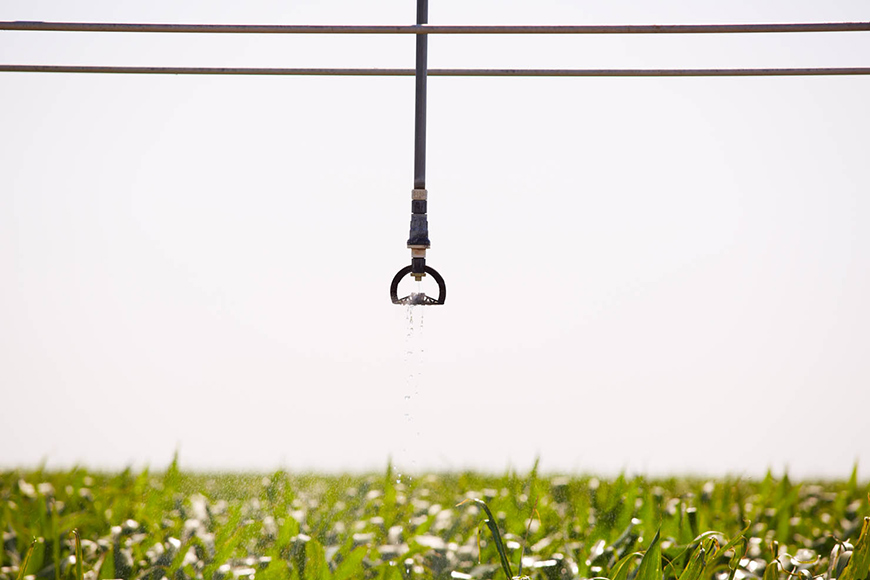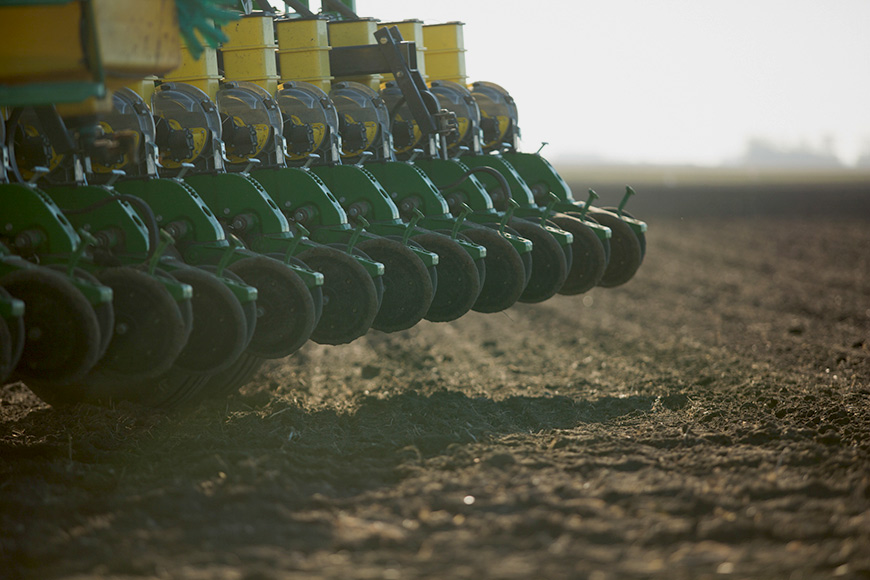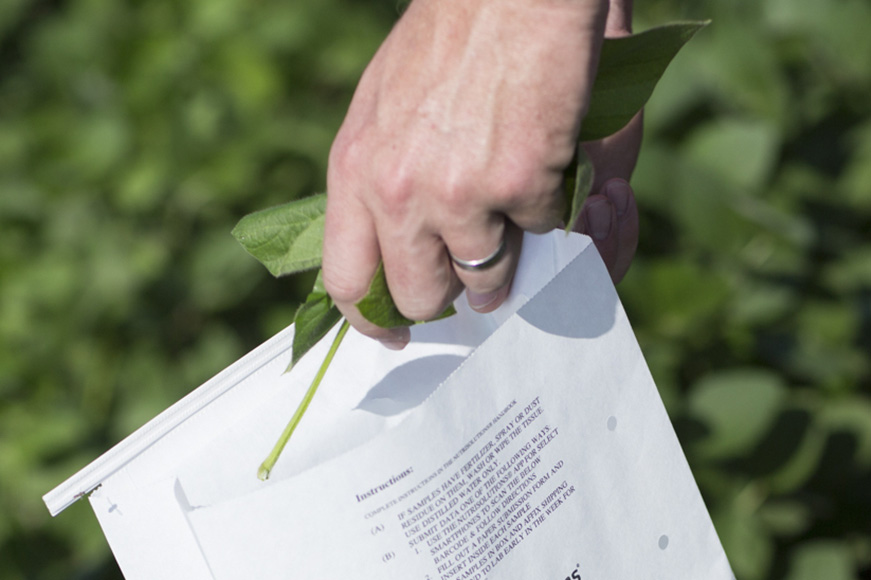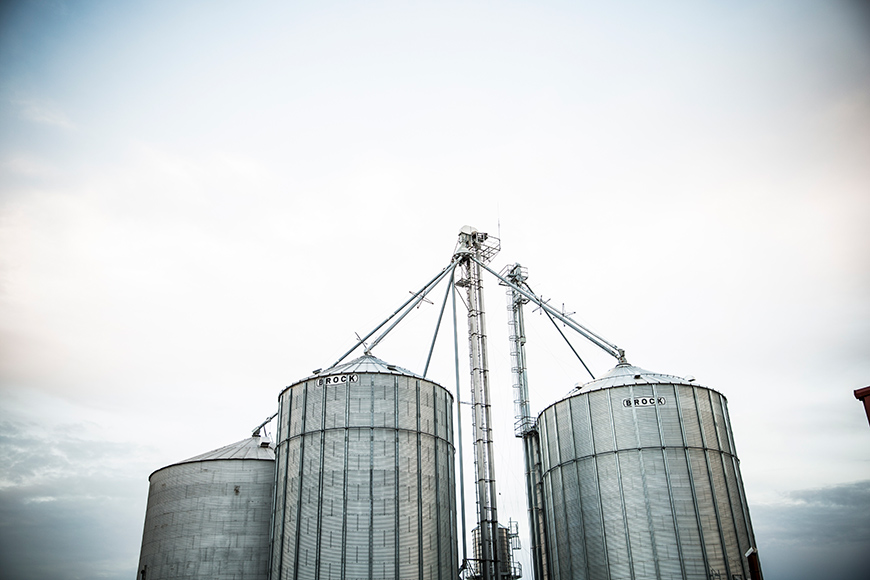Use Sensors to Get Smart About Soil Moisture

If you irrigate any portion of your land, you know that maintaining optimal soil moisture is important to help sustain crop growth and yield potential. Too much water can cause nitrate runoff and waste a valuable resource. Too little water can cause plant stress and end up costing you in yield and ROI at season’s end.
Using soil moisture sensors in conjunction with the R7® Field Forecasting Tool can help you strike the right balance when you irrigate.
A big difference
You’ve probably heard it said that there’s a big difference between “watering” and “irrigating.” Watering is when you turn on your irrigation system and let it run until you think you’ve put enough water on your crops. Irrigating is running your irrigation when you need it and not running it when you don’t. You’re making an informed decision about why you’re turning it on and off. For example, if you apply nitrogen to your corn and then irrigate too much, you’re causing runoff. This isn’t good for the environment or your wallet.
A better alternative is to pair soil moisture sensors with a predictive modeling instrument like the Field Forecasting Tool. Here’s how that might work.
Be prudent with the pivot
The Field Forecasting Tool takes historical data — such as rainfall amounts, nitrogen or potassium stresses, and crop growth (shown as biomass accumulation) — and calculates how much water you may need to avoid a deficiency. The tool also factors in soil texture and water-holding capacity.
For example, based on collected local weather data, let’s say the Field Forecasting Tool predicted 2 inches of rain during a particular time period and 3 inches were actually received. All you or your agronomist need to do is make that change in the tool and receive an adjusted yield and ROI projection.
It costs money to switch on your irrigation system and to use water. The Field Forecasting Tool gives you the ability to see whether your soil moisture is “Adequate,” “Responsive” or “Deficient,” and provides a heads-up to start your irrigation system to ensure you remain in the Adequate or Responsive range.
Tag-team technologies
I’ve been working with a farmer who irrigates and uses moisture sensors along with the Field Forecasting Tool. This farmer has an advanced moisture sensor system that sends a notification alerting him that his soil could reach the point where it’s in a moisture deficit. Just before it reaches that critical level, he receives another notification that he needs to start irrigating.
After receiving one of those messages, we also checked the Field Forecasting Tool, which indicated the field would be in water stress in one day. So we had a sensor located in the field and a predictive model that were alerting us to the same thing. That’s when this farmer’s confidence level in the Field Forecasting Tool really started to climb.
Talk with your locally owned and operated WinField United retailer about using the Field Forecasting Tool and soil moisture sensors in tandem. Even if you don’t use soil moisture sensors on your operation, you can still use the Field Forecasting Tool to spot crop stress before yield is lost. No two growing seasons are the same, so use technology to stay a step ahead of weather and rainfall to make sure your soil moisture is in balance.
© 2019 WinField United. R7® and WinField® are trademarks of WinField United.
Using soil moisture sensors in conjunction with the R7® Field Forecasting Tool can help you strike the right balance when you irrigate.
A big difference
You’ve probably heard it said that there’s a big difference between “watering” and “irrigating.” Watering is when you turn on your irrigation system and let it run until you think you’ve put enough water on your crops. Irrigating is running your irrigation when you need it and not running it when you don’t. You’re making an informed decision about why you’re turning it on and off. For example, if you apply nitrogen to your corn and then irrigate too much, you’re causing runoff. This isn’t good for the environment or your wallet.
A better alternative is to pair soil moisture sensors with a predictive modeling instrument like the Field Forecasting Tool. Here’s how that might work.
Be prudent with the pivot
The Field Forecasting Tool takes historical data — such as rainfall amounts, nitrogen or potassium stresses, and crop growth (shown as biomass accumulation) — and calculates how much water you may need to avoid a deficiency. The tool also factors in soil texture and water-holding capacity.
For example, based on collected local weather data, let’s say the Field Forecasting Tool predicted 2 inches of rain during a particular time period and 3 inches were actually received. All you or your agronomist need to do is make that change in the tool and receive an adjusted yield and ROI projection.
It costs money to switch on your irrigation system and to use water. The Field Forecasting Tool gives you the ability to see whether your soil moisture is “Adequate,” “Responsive” or “Deficient,” and provides a heads-up to start your irrigation system to ensure you remain in the Adequate or Responsive range.
Tag-team technologies
I’ve been working with a farmer who irrigates and uses moisture sensors along with the Field Forecasting Tool. This farmer has an advanced moisture sensor system that sends a notification alerting him that his soil could reach the point where it’s in a moisture deficit. Just before it reaches that critical level, he receives another notification that he needs to start irrigating.
After receiving one of those messages, we also checked the Field Forecasting Tool, which indicated the field would be in water stress in one day. So we had a sensor located in the field and a predictive model that were alerting us to the same thing. That’s when this farmer’s confidence level in the Field Forecasting Tool really started to climb.
Talk with your locally owned and operated WinField United retailer about using the Field Forecasting Tool and soil moisture sensors in tandem. Even if you don’t use soil moisture sensors on your operation, you can still use the Field Forecasting Tool to spot crop stress before yield is lost. No two growing seasons are the same, so use technology to stay a step ahead of weather and rainfall to make sure your soil moisture is in balance.
© 2019 WinField United. R7® and WinField® are trademarks of WinField United.




